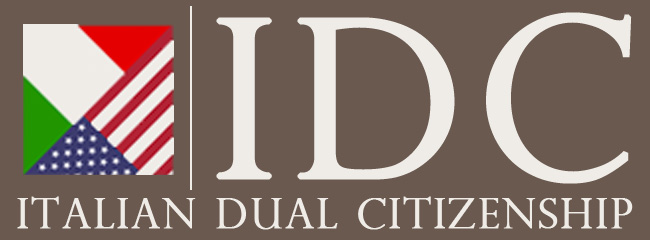HOW DO I GET DUAL CITIZENSHIP IN ITALY?
7 STEPS TO OBTAIN DUAL CITIZENSHIP IN ITALY

Obtaining Italian dual citizenship is a process that takes time. Italian Americans often feel grateful for the fact that acquiring dual citizenship in Italy is so much “easier” than anywhere else in Europe – especially if you have proven ancestry ties to the country.
You see, Italy operates on a principle called jure sanguinis which simplifies the laws surrounding heritage citizenship. Just to you know, jure sanguinis translates as “by right of blood” which explains why Italy is so quick to recognize individuals with Italian heritage. In other words, even distant descendants of the diaspora can obtain dual citizenship in Italy, provided that they present sufficient documentation.
American citizens can obtain Italian citizenship a lot easier than almost any other nationality but you need to have the right documentation in place to ensure a smooth process.
With this in mind, let’s take a look at the 7 steps to obtaining dual citizenship in Italy (via a consulate):
How do I get dual citizenship in Italy?
1. Identify Your Most Recent Ancestral Link to Italy
You will need to identify your most recent ancestor to have been born in Italy and work backwards from there. Ask any knowledgeable family members about your family’s history and determine which ancestor is your most recent link you have to Italy. Due to certain laws related to heritage citizenship, it’s best to start with a male relative as females prior to 1948 were not permitted to pass on Italian citizenship. As for what you might need to know: What do you know about this person? Where was the person born and can you find out the name of their parents?
2. Searching for Naturalization Records
You can use a name and date of birth search for the naturalization record of your ancestors via the United States government. However, the actual date of this naturalization is even more important as you may qualify for Italian citizenship if your most recent ancestor was naturalized after the birth of his/her child. Italian citizenship law will also apply to each circumstance.
3. Retrieving Documents and Contacting Your Local Consulate
If your most recent ancestor was married in Italy, the marriage certificate can be very influential for obtaining citizenship in Italy. That being said, the birth certificate of this ancestor is more important and you may need to retrieve the birth certificate for the spouse of this same ancestor.
As the rules are slightly different for each circumstance, it’s best to contact your local consulate and check in terms of what US documents you will need to present. Certified long form records are always required and the exact Italian dual citizenship documents will differ from one instance to the next.
4. Apostilling Your Documents for Italy
You will need to verify (apostille) all American documents as legitimate before sending them to Italy. Your local consulate should be able to confirm which documents need to be apostiled and the original long form records will be required by the US Secretary of State in order to verify each document.
5. Translate your English documents into Italian.
You will also need to know which documents need to be translated for use in Italy. In case you might be asking yourself, this is not something you can do on Google translate and a professional will be needed to ensure the accuracy and attention to detail is second to none. On the other hand, if you can speak fluent Italian or know someone who does, this can help.
Moral of the story: Flawless translation is extremely important for your application and anything less is likely to result in lengthy delays at the very least.
6. Take Your Application to the Local Italian Consulate
You should always visit the consulate in your local jurisdiction. When the consular has had time to review your documents and application, you will either receive feedback or confirmation of a successful application. That is to say, you may not have submitted the right documentation or sufficient information and it might be necessary that you revise this application.
Whether you have to procure and amend certain records or send this application off for a better translation, all deficiencies must be fixed before re-submitting your application for review at the consulate.
7. Apply for Your Italian Passport
If your application is successful, the consulate may or may not enroll you with the registry for Italians living Abroad (AIRE). Regardless, you will need to contact AIRE and ensure that they have received your information and that you are registered as an Italian citizen living aboard. At this point, you will be eligible to apply for an Italian passport and can make an appointment to submit this application.
Final Thoughts
The process is pretty straightforward for obtaining dual citizenship in Italy. In fact, while certain limitations exist, this is widely known as the easiest country in Europe to obtain citizenship. However, there are still specific requirements and depending on your circumstances, you may or may not be subjected to further rules and legislation. Either way, the above steps should provide you with a clear blueprint and get your started on obtaining dual citizenship in Italy.


